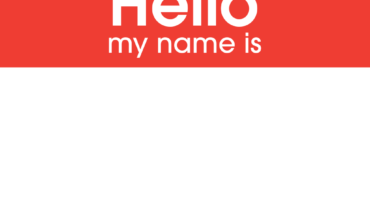Video Festival
Everyone’s out on the grove, drinking mojitos and chatting away. Night has finally fallen, which means it’s dark enough for us to see the screen clearly. We’ll be watching some videos created for the web, and it’s a great end to a long, productive, thought-provoking day.
Lauren C, Executive Director of Rhizome, the online arts organization, introduces the panel of media makers:
Christine Gambito, “Happy Slip” vlogger
Steve Rosenbaum, Magnify Media
JD Lasica, Our Media
And three students from the University of Miami
Christine “Happy Slip” Gambito introduces a sampling of her work, which is very popular on YouTube. Christine is an actress living in New York, and her work is expressive, funny and quirky; compelling and addictive. Her videos engages with and parodies different forms of media, from fragrance commercials to the lonelygirl15 phenomenon to soap operas to music videos. The great thing about Christine’s pieces is that although the production values are low, it’s clear that this work is showcasing a creative, smart, engaging personality. She’s planned them out, really given a lot of thought to each piece, and made pieces that are pithy, well-edited, and that take full advantage of this nascent medium.
Christine talks about these video pieces as a way to be and showcase the actress she wants to be. She started creating videos just to have an outlet, and was surprised by the popularity of her videos. Christine also talks about the need for media makers to make a some money from their creative efforts. Hopefully, as the different platforms continue to evolve, the makers will reap some of the financial rewards that they generate for the big platforms like YouTube.
JD Lasica from Our Media talks about alternatives to YouTube in terms of video storage and publishing. He plays a video of a mashup/edited “exchange” between Dick Cheney and George Bush. JD points out that people can now make stories and create pieces with political commentary; they don’t have to rely on mainstream media anymore (except, maybe, to occasionally mock mainstream media). Ourmedia is trying to form a different model, one that is less ad-driven and more concerned with forming a community of video-makers.
Steve Rosenbaum from magnify.net is up next. Magnify.net “lets you find, filter, and share video from the web and gather it your way.” Steve is from a filmmaking background, and he shows a piece that’s completely made up of still photos from flickr, set to music. Here’s another example of taking pre-existing media and recontextualizing it with a strong editorial eye, creating something completely new during the process.
The thing that occurs to me as I watch these videos is how this is an incredible medium for engaging with pre-existing media. Christine’s work builds off of certain conventions from “mainstream” media that we’re all familiar with, and the work that JD and Steve are showing are mashups. This is all fascinating, but does this dependence on other media also highlight one of the limitations of web video? Of course, it’s also possible that the web video medium is so young that this is only the beginning of its creative development, and that as the medium grows, it will become more original and adopt new conventions in ways that are hard for us to imagine now.
A group of students from the University of Miami created an independent study to make webisodes. They show some of their work, the first of which is called “Minority Hotel” which deal with race and class in a series of parody videos. The episode of “Minority Hotel” we saw was a little bit like pieces from “Chappell’s Show,” and now that I think about it, sketch comedy is an important model for a lot of web videos.
As someone who works for P.O.V., the series for independent documentary films on PBS, I’m really interested in watching web videos, and seeing what develops in the medium. There is still such a high financial threshold for making a feature length documentary, but it’s becoming much easier for people to create their own, much shorter, non-fiction pieces. These pieces, however, are going to look nothing like what we think of as “documentary film.” So what can we at P.O.V. and other organizations do to support the next generation of media makers? And what can we learn from them?



